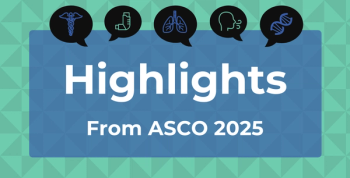
Supreme Court Case, Budget Bill Could Have Devastating Effects on Planned Parenthood: Q&A With Danika Severino Wynn, CNM
The Supreme Court decision in Medina v Planned Parenthood South Atlantic and the subsequent passing of the budget bill leave Planned Parenthood clinics and their patients in a precarious spot, says Danika Severino Wynn, CNM.
Funding for Planned Parenthood faced severe challenges when the Supreme Court sided with Medina in Medina v Planned Parenthood South Atlantic on June 26, 2025, and the budget bill passed on July 3, 2025. Both of these decisions allow for a defunding of Planned Parenthood on the state and federal levels, potentially impacting millions of people who turn to these clinics for medical treatment. Danika Severino Wynn, CNM, vice president of care and access for Planned Parenthood Federation of America, discussed how these decisions could impact those in underserved areas and how Planned Parenthood plans to address these funding decisions.
AJMC: On June 26, the Supreme Court sided with Medina in the Medina v Planned Parenthood case that allowed for South Carolina, and any other state, to withhold Medicaid funds from Planned Parenthood and other abortion clinics. What are the repercussions of this decision, especially as it pertains to Planned Parenthood’s future operation in SC and other states?
Wynn: While this particular ruling is limited to South Carolina for now, Congress has now passed legislation to take this political agenda nationwide by “defunding” Planned Parenthood. By siding with Medina in Medina v Planned Parenthood South Atlantic, the US Supreme Court has opened the door for other states to stop patients from using Medicaid to get care at Planned Parenthood health centers. Excluding Planned Parenthood from Medicaid means patients can’t see their trusted provider for birth control, STI [sexually transmitted infection] testing and treatment, annual exams, cancer screenings, and more.
AJMC: In addition to this decision, the budget bill passed on July 3 includes provisions to cut off Medicaid funds from Planned Parenthood. Although this has since been blocked by a federal judge, what does this mean for the future of funding of Planned Parenthood federally?
Wynn: If Planned Parenthood is “defunded,” nearly 200 Planned Parenthood health centers in 24 states across the country are at risk of closure. More than 1.1 million patients could lose access to care including birth control, cancer screenings, STI testing and treatment, and abortion.
AJMC: Who is the most affected by the Supreme Court and Congress making this decision and passing this budget bill, respectively?
Wynn: Rural and underserved communities will be hardest hit by targeted attacks that intend to “defund” Planned Parenthood, devastating communities that already face severe barriers to health care. A majority (60%) of Planned Parenthood health centers at risk of closure are located in medically underserved areas, primary care health professional shortage areas, or rural areas. These are categories defined by federal agencies—including the HHS—as areas where health care access is severely limited.
This reckless attack on Planned Parenthood will devastate communities that already face outsized barriers to health care—worsening our already broken health care system and existing health inequities. Planned Parenthood health centers save lives. We know what this means: cancers will go undetected, STIs will go untreated, birth control will be harder to get, and the public health infrastructure of communities will break down.
AJMC: Approximately 4 in 10 people using Medicaid have used Planned Parenthood for care across the country. Is there a way to bridge that gap in funding to continue to care for these patients?
Wynn: Planned Parenthood health centers are an irreplaceable part of our health care system. A total of 64% of Planned Parenthood health centers across the country are in rural or medically underserved areas or areas with health professional shortages, and more than half of Planned Parenthood patients are enrolled in Medicaid. Without Planned Parenthood, many patients would have nowhere to turn for care.
While philanthropy makes a crucial difference to patients and providers, there is no way for charitable donations alone to make up for the loss of reimbursement for the 1.1 million Medicaid patients who rely on Planned Parenthood health centers for care. And this “defunding” layers on top of the challenges Planned Parenthood health centers already face in fulfilling our mission to provide care to all people in need, such as an increasingly hostile political environment, low reimbursement rates from insurers, rising costs of providing care, lack of state and federal funding for people with the greatest need, and more.
AJMC: What are the next steps for Planned Parenthood?
Wynn: Earlier this month, Planned Parenthood Federation of America and 2 Planned Parenthood members—Planned Parenthood League of Massachusetts and Planned Parenthood Association of Utah—filed a lawsuit in the US District Court for the District of Massachusetts against the provision in the reconciliation law that unconstitutionally “defunds” Planned Parenthood by stripping patients of their ability to use Medicaid at Planned Parenthood health centers nationwide.
Planned Parenthood Federation of America, Planned Parenthood League of Massachusetts, and Planned Parenthood Association of Utah are currently in court fighting against the Trump administration and Congress’s unlawful attempt to “defund” Planned Parenthood and deny more than a million people access to their trusted health care provider. Although the provision is currently blocked under a temporary restraining order, allowing it to take effect would have devastating consequences for patients and communities across the country if the law is allowed to go back into effect.
Planned Parenthood health centers will never stop caring for patients, and care will continue—no matter what. Every person, no matter where they live, what kind of care they need, or how much money they have, should be able to get high-quality, affordable health care.
Newsletter
Stay ahead of policy, cost, and value—subscribe to AJMC for expert insights at the intersection of clinical care and health economics.







































